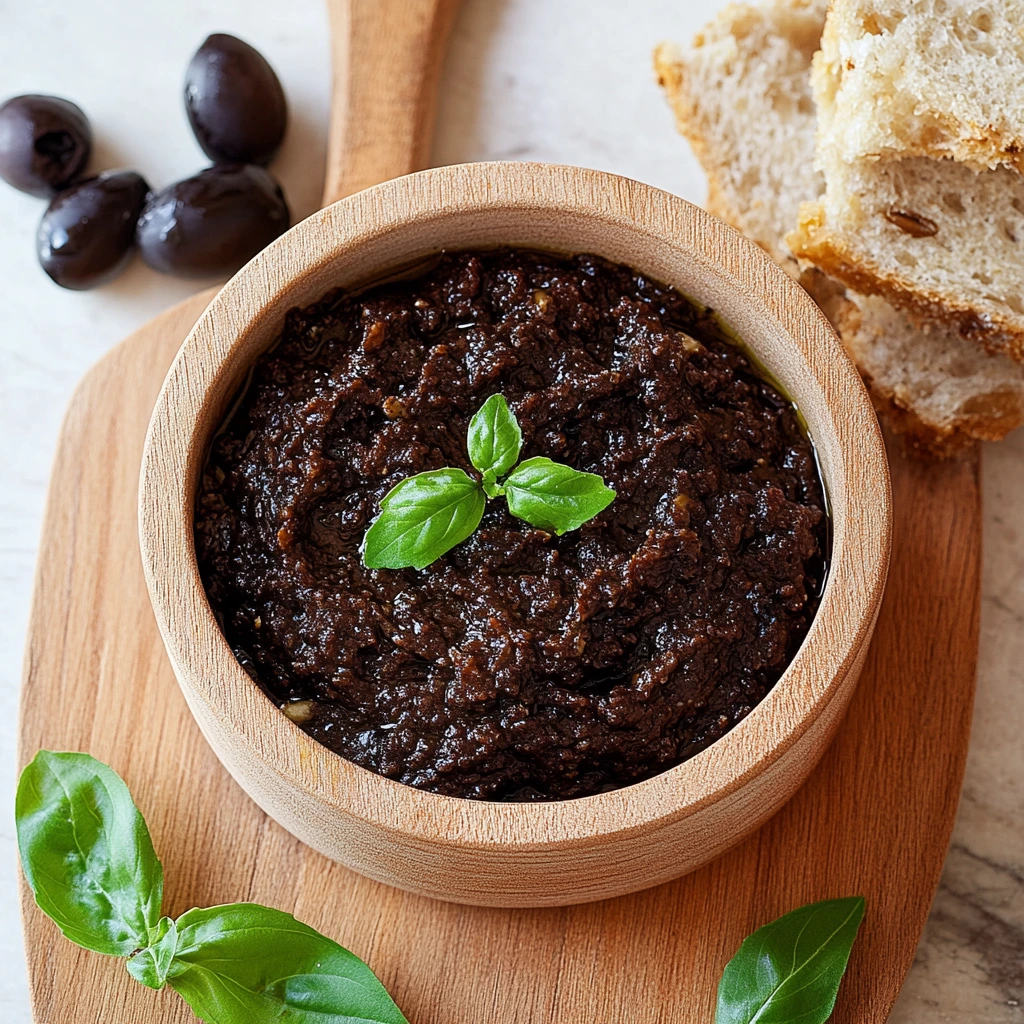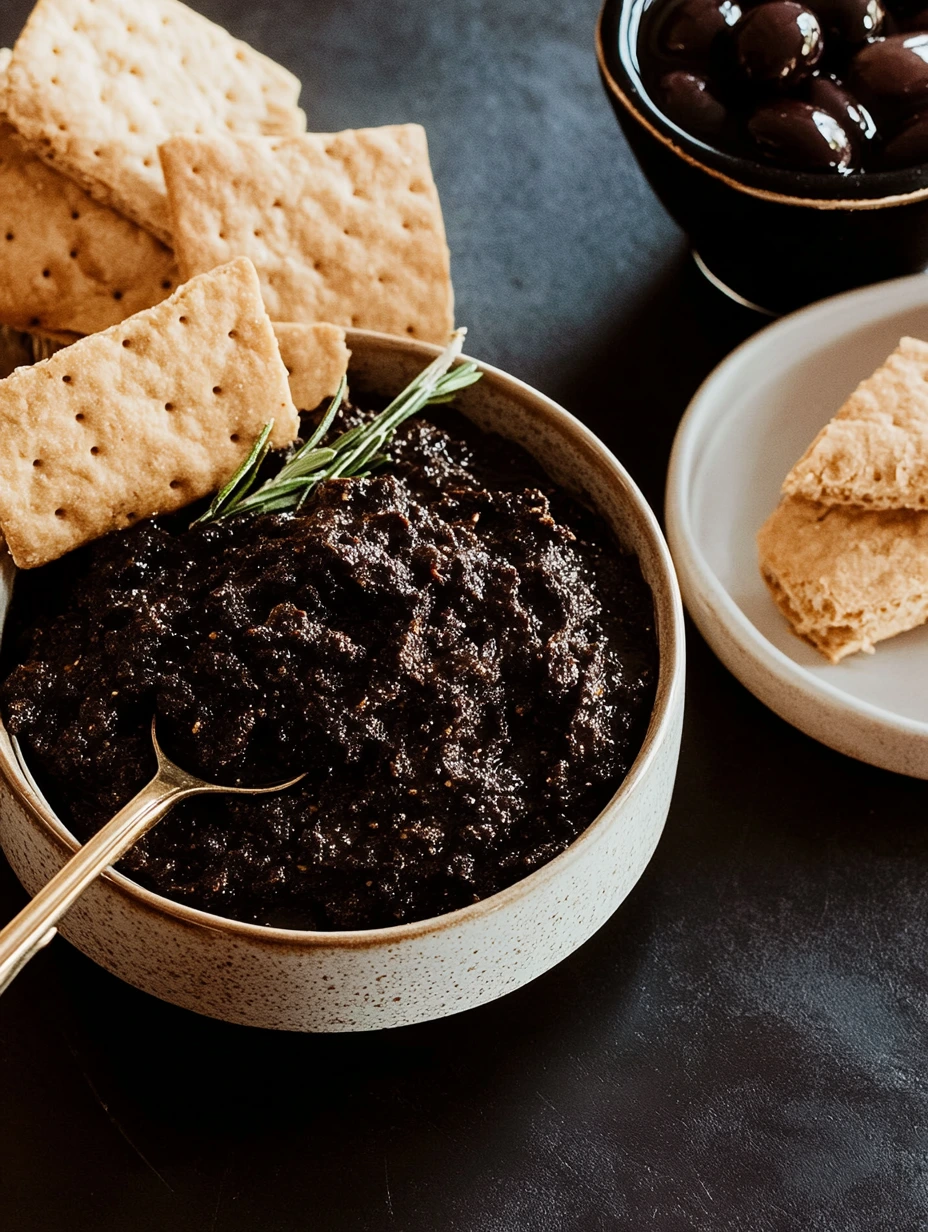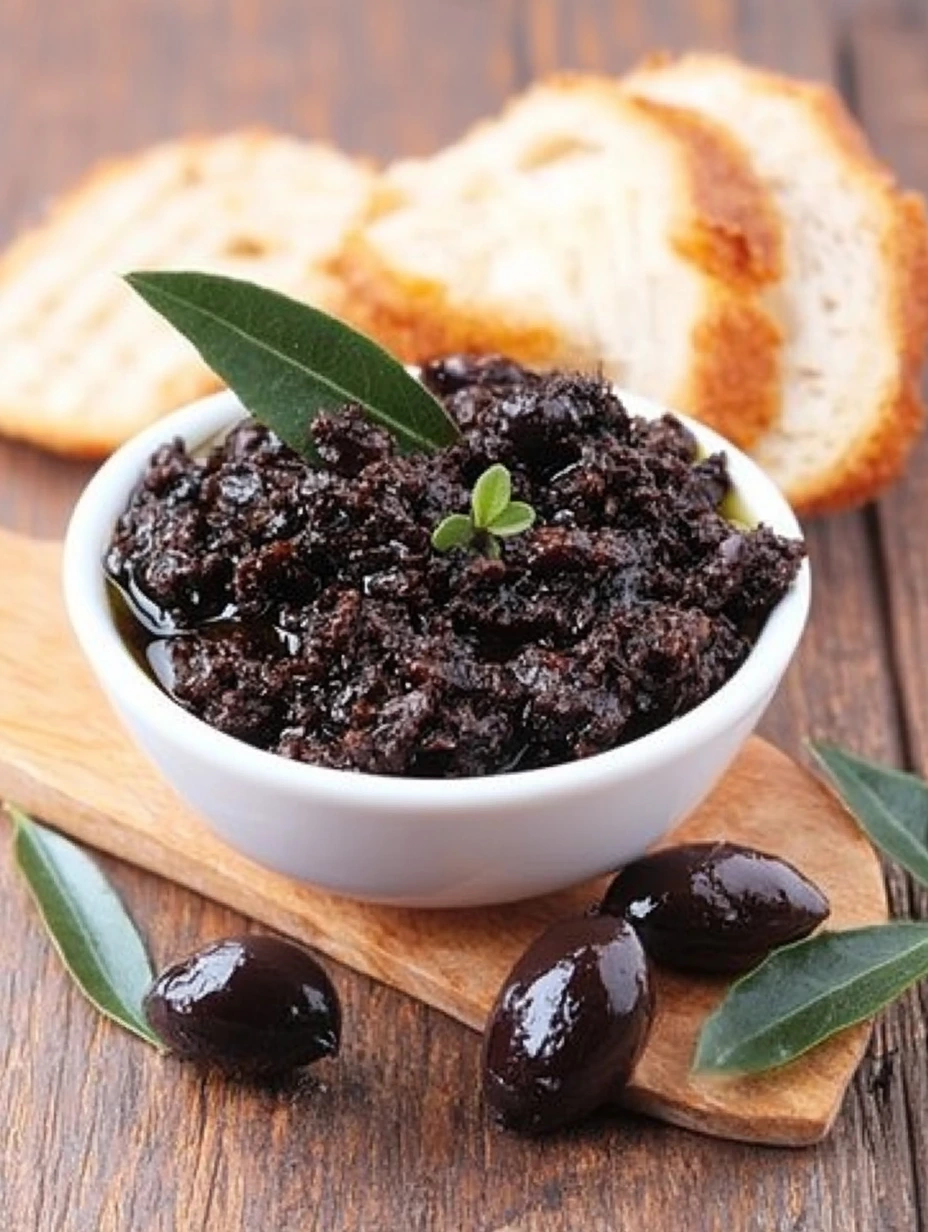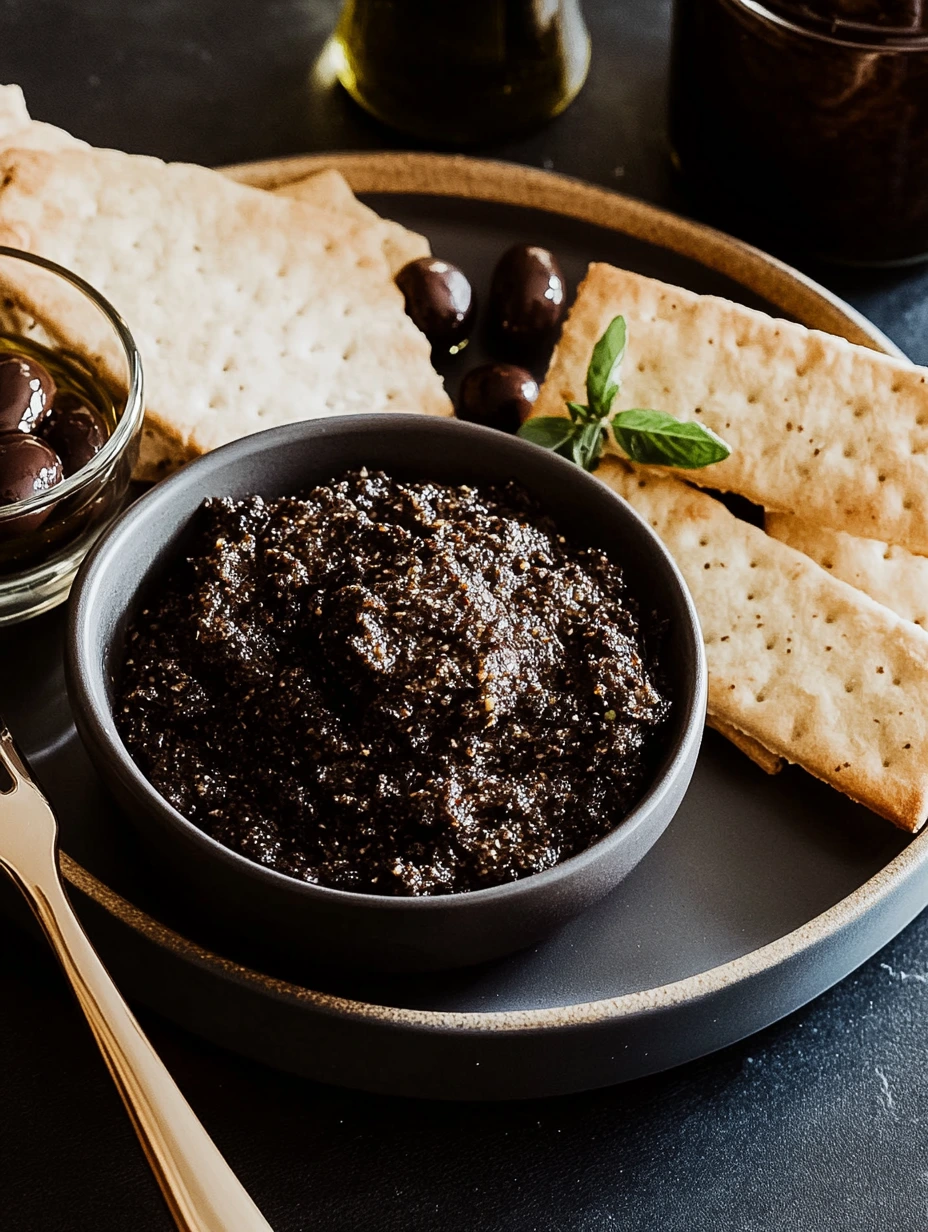 Pin it
Pin it
This black olive spread takes you right under the olive trees of Southern France. Every bite brings Provence to mind with its rich olive flavor, garlic hints and that thick texture that wins over every taste bud. Quick, easy and true to tradition, this Mediterranean mix turns any normal snack time into a friendly gathering with real flavors, just like sitting at a café in Provence.
 Pin it
Pin it
Must-Have Ingredients
- Pitted black olives: These form the backbone of your spread and really shape how it'll taste. Go for good quality ones, preferably those kept in saltwater rather than oil for a more genuine flavor.
- Anchovy fillet: Just a tiny bit is enough to add that special depth without taking over. Pick quality anchovies, and rinse them if you want less salt.
- Capers: These little flower buds bring a nice tang that balances the richness. Drain them well before using so your spread isn't too wet.
- Fresh garlic: One or two cloves will gently flavor everything. Choose young garlic without sprouts to avoid bitterness.
- Extra virgin olive oil: Use the best you can find, ideally a fruity one from Provence to stay true to the origins.
- Fresh lemon juice: It adds brightness and lift to all the flavors. Squeeze it at the last minute to keep all its aromatic qualities.
- Freshly ground black pepper: It gently enhances everything without hiding the other ingredients.
Lightning-Fast Prep
- Getting stuff ready:
- Start by thoroughly draining your pitted black olives and capers to get rid of extra brine. Peel the garlic and take out the middle sprout if needed. Open your anchovy can and take out just one fillet (or two if you like a stronger flavor). Cut your lemon in half and grab a juicer. Get your pepper mill and your best olive oil out. All this setup takes just a minute but makes everything go smoothly.
- Smooth blending:
- Put all the solid stuff in your food processor or blender: drained olives, capers, crushed garlic and the anchovy fillet. Add a few twists of pepper to your liking. Squeeze in juice from a quarter lemon directly. Pulse in short bursts to start getting a rough but even mix. This step-by-step approach lets you control how chunky or smooth you want it, since some folks prefer a rustic spread while others want it perfectly smooth.
- Final touch:
- While still pulsing, slowly pour in olive oil to make a creamy mix. About three or four tablespoons usually does the trick, but adjust for the thickness you want. Stop the machine regularly to scrape down the sides and check the texture. The perfect spread should be thick enough to stay on bread but soft enough to spread easily. Taste and tweak if needed, maybe adding more lemon juice for freshness or a bit more pepper for kick.
 Pin it
Pin it
Beautiful Serving Ideas
Black olive spread shines best on a colorful Mediterranean antipasti platter. Serve it in a cute clay dish, surrounded by crunchy veggies like carrot sticks, celery and colorful bell peppers that bring freshness and contrast. Lightly toasted baguette slices or herby homemade crackers make great bases for enjoying its creamy texture. For a fancier look, top small toasts with the spread and add a cherry tomato quarter and a whole olive as garnish. Pair it all with a chilled glass of Provence rosé for a complete taste experience that'll whisk your guests straight to the Mediterranean sunshine.
Creative Twists
Though traditional, this spread can be reimagined based on what you feel like or what's in your pantry. For a milder, creamier version, mix in some fresh goat cheese chunks that soften the olive intensity while adding a creamy feel. Spice lovers will enjoy adding a bit of Espelette pepper or a few drops of hot sauce. For a spring-like herby version, stir in a big handful of fresh basil or mixed Provence herbs. You can also create a two-tone version by mixing equal parts green and black olives, or play with textures by tossing in lightly toasted pine nuts at the very end to keep their crunch.
 Pin it
Pin it
Smart Storage
This spread gets better with time as the flavors blend nicely after a few hours of sitting. For perfect storage, put it in a clean, dry glass jar, then gently pour a thin layer of olive oil on top to create a protective barrier against air. Seal it tight and pop it in the fridge where it'll easily keep for two weeks. Take it out about thirty minutes before eating so it can warm up to room temperature and release all its flavors. If you want to keep it longer, freezing works too; spread the mix in an ice cube tray for easy single portions, topped with a bit of olive oil. Once frozen, move the cubes to a freezer bag where they'll last up to three months.
Frequently Asked Questions
- → Can I swap out black olives for green ones?
- Sure, green olives can work as well. The flavor will change, but it’s still tasty.
- → How should I store tapenade?
- Keep it in an airtight jar in the fridge for about a week. A layer of olive oil on top can help it last longer.
- → Can I make it vegetarian by skipping anchovies?
- Definitely! Just leave out the anchovies. Add a pinch more salt or some herbs for extra flavor if needed.
- → What do I do if I don’t have a blender?
- Use a mortar and pestle for a chunkier finish or try an immersion blender in smaller batches.
- → Any ideas for serving beyond appetizers?
- Use it to toss with pasta, fill tomatoes, spread on a sandwich, or pair it with grilled fish.
